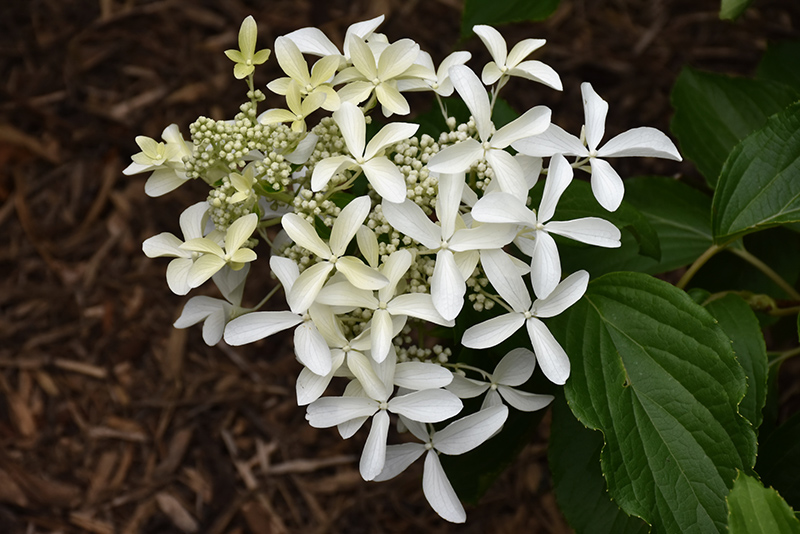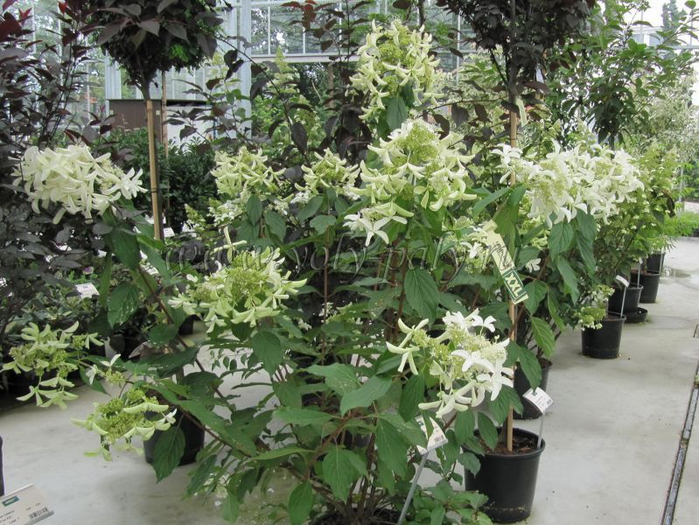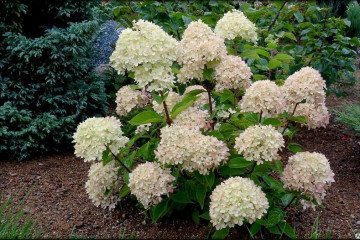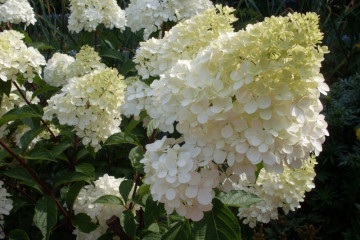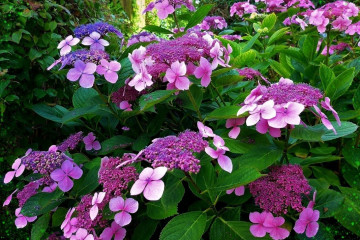Hydrangea Great Star paniculata (Great Star)
Content:
The Great Star variety is one of the most beautiful and delicate among hydrangeas. It has snow-white colors that look like stars, hence its name. These plants require a lot of attention. This article explains what the Great star panicle hydrangea is and how to properly care for it.
Hydrangea Great Star paniculata (Great Star)
Hydrangea paniculata Great Star was developed in France. She amazes with her amazing flowers, which grow alone from buds, very similar in shape to the stars. The size of the flowers is about 10 cm, which is rare in itself.
The origin and appearance of the Great Star hydrangea
These flowers were first mentioned by botanist Phillip Franz in 1830 in Japan. This plant was very actively cultivated there. The natural habitat of the Star hydrangea flower is the subtropical climate. The flower is accustomed to constant rains, so when grown in an apartment environment, it needs to create the same environment as in the wild.
Description of flowering hydrangea Great Star
The roots of the plant grow longer than the top. They grow very deeply into the ground. The leaves are large, round, light green in color. The buds are overgrown with two types of flowers. Some are small and fruitful. Others are sterile and large, with high legs. Flowers have a pronounced smell of meadow grass and greenery.
Transplanting hydrangea Great Star after purchase in open ground
Not many plant varieties can survive a transplant. This hydrangea is paniculate and tree-like.
In order for the transplant to be successful, you need to adhere to the rules that are described below.
What is needed for landing
First you need to prepare a place: clean it of debris, sticks, roots and weeds. In advance, you can loosen the soil along with the peat. The hydrangea should be open-rooted. Before planting, treat the plant with Kornevin.
Choosing the best place
It must be remembered that this plant does not like permutations, so the place is chosen forever. A lot of light or darkness will harm the flower. In the heat, the buds become smaller, and in the dark they fall off. Penumbra is the best place for hydrangeas.
Step-by-step planting process
Usually the plant is planted in spring or early autumn when the soil is warmed up. Here's what to do:
- For planting, they dig holes about 50 cm deep.
- Before planting, water the bottom of each hole well.
- They make a mixture for the plant: river sand, peat and humus are added to the soil from the hole.
- Shells or broken bricks are poured at the bottom of the hole.
- The seedlings are carefully placed in a hole and a little sprinkled with earth.
Reproduction of hydrangea Great Star
Reproduction is done in two ways: cuttings or layering. But in any case, it is necessary to use growth stimulants, because all varieties of this plant grow rather poorly at home.
Propagation by cuttings
Cuttings are carried out around the middle of summer.It is advisable to cut cuttings from young flowers. If the bush is old, then you first need to pinch.
The cut shoots should be placed in the water in partial shade and cuttings should be started as soon as possible. Cut off the green crown with a bud at the shoot, since it is not suitable for grafting.
Growing from seeds
If planting is done in winter or early spring, then in the third year it will be necessary to transplant adult bushes to the site.
Step-by-step execution of work:
- Add soil to a pot 25 cm high, leaving a couple of cm to the edge.
- Dry seeds are scattered on the ground, you do not need to fill them up. A little river sand is poured on top, then the substrate is watered.
- Next, they create the effect of a greenhouse in a pot, covering it with a film. Airing is carried out from time to time.
- After about 2-3 weeks, the greenhouse is removed.
Hydrangea Care Great Star
Constant and proper care of the Great Star plant will help you get amazing and original flowers that will bring aesthetic pleasure to their owner for many years. This plant needs a lot of time.
Watering mode
This plant is very fond of water, so abundant watering is an important part of growing.
Top dressing
In order for the bushes of the plant to have lush flowering, you must definitely take care of the correct feeding. They are added 4 times per season. The first time the bushes are fed in early spring. The second feeding takes place during the ripening of the buds, when the flower must be fertilized with potassium sulfate. The third time it is fed at the beginning of summer with the use of mineral fertilizers. The last feeding is at the end of autumn, before wintering.
Features of care during the flowering period
For the correct development of a flower, operations such as weeding and loosening of the earth, fertilizers and correct water regime are needed. Also, at the beginning of summer, the plant should be mulched with wood shavings or peat in order to avoid the rapid removal of moisture.
Features of care during the rest period
In winter, the flower must stand in a well-lit place for the buds to ripen. You can put the pot on the south window.
Preparing for winter
To preserve the buds on the plant, they cover it for the winter. You can move it indoors. Only hydrangea, bred by cuttings, is capable of surviving frosts.
Hydrangea Great Star is quite capricious in her care, does not like permutations and bright sun. But if you approach her with all responsibility, then the plant will delight with amazing, beautiful flowers. Before taking a plant in a nursery, gardeners recommend consulting with experienced people in order to avoid the death of the flower.
